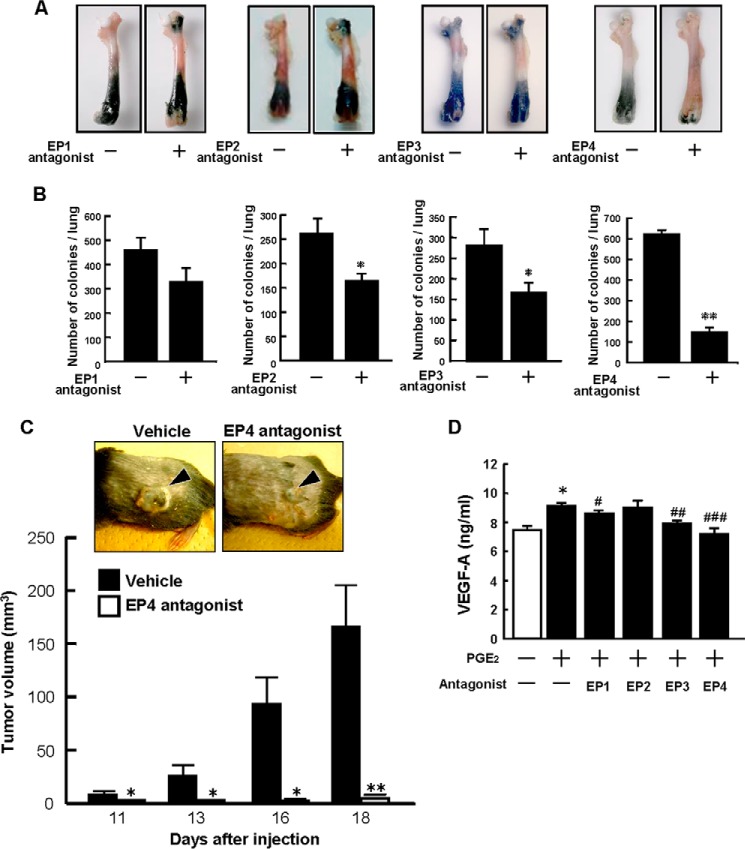FIGURE 6.
An EP4 antagonist inhibits the growth and metastasis of B16 tumors. A, wild-type mice were injected with B16 cells, and then EP antagonists were administered orally for 17 days. Representative pictures of the tumor growth in the femora are shown. B, lungs were collected 18 days after injection, and the tumor colonies were counted. Data are mean ± S.E. (vehicle, n = 8–10; EP1 antagonist, n = 9; EP2 antagonist, n = 8; EP3 antagonist, n = 9; EP4 antagonist, n = 10). *, p < 0.01; **, p < 0.001. C, wild-type mice were injected with B16 cells into the dorsal subcutaneous tissue and treated with either vehicle or an EP4 antagonist by subcutaneous injection around the tumor. Representative pictures of the tumors on day 16 after injection are shown in the top panel. The arrowheads indicate the subcutaneous solid tumor. The tumor volume was determined by measurement of the tumor dimensions using calipers on days 11–18. *, p < 0.01; **, p < 0.001. D, dermal fibroblasts collected from wild-type mice were cultured in the presence or absence of PGE2 (10 μm) and an antagonist of EP1, EP2, EP3, or EP4 (10 μm each). After 48 h, the concentration of VEGF-A in the conditioned medium was determined by ELISA. Data are mean ± S.E. of three wells. Significant differences from control (*, p < 0.01) and PGE2-treated (#, p < 0.05; ##, p < 0.01, ###, p < 0.001) cells are indicated.

